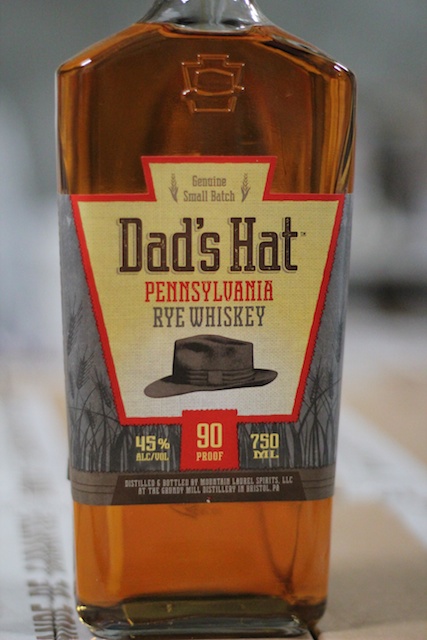The Rebirth of Pennsylvania Rye

I've often heard the term "Monongahela rye" or Pennsylvania rye referred to in whiskey conversation, but I'd never actually researched the term to figure out what it meant specifically. As far as I knew, it meant rye distilled in Pennsylvania and I knew there was a history of production within the state. I'd also heard of distinct styles made in Maryland and Cinncinati, but again I was at a loss when asked to describe their differences. These were all pre-Prohibition styles that get name-dropped by whiskey historians, but I've never been one to seek out the past. I knew that Old Overholt, before it was made by Jim Beam, was one of the most famous brands of Monongahela rye, along with Schenley and Old Jupiter. A recent article on the Pittsburgh Post-Gazette wrote:
"Old Overholt was born in Westmoreland County. The old Israel Shreve distillery still stands in Perryopolis, on a property once owned by George Washington; the original Michter's distillery was built in Pennsylvania Amish country and operated until 20 years ago. It all would make for a nice little history trail, wouldn't it?"
Pennsylvania's history with rye whiskey seems to be like Campbeltown's history with single malt. Both were once big players in the industry, but today little remains from their glorious pasts. However, whereas bad speculation and investments bankrupted Campbeltown, it was the government-imposed American Prohibition that ruined Pennsylvania, and it's only now coming back to life.
As far as what constituted Monongahela rye, I've read numerous reports that are difficult to summarize. Maybe they all sourced their water from the Monongahela river than runs through Pittsburgh? Not being completely sure, I searched for an article written earlier this year by my friend Steve Ury over at SKU's Recent Eats:
Back then, American whiskey usually meant rye whiskey, and Old Monongahela Pennsylvania style rye was one of the major categories of rye. It's hard to find information about the rye of that era, but from what I gather, it contained a much higher percentage of rye than today's Kentucky rye whiskeys, which tend to have close to the minimum of 51% rye. Monongahela rye also usually combined malted and unmalted rye. [EDIT: See the comments by Pennsylvania whiskey expert Sam Komlenic which indicate that by the twentieth century, Pennsylvania rye was no longer using rye malt but barley malt in combination with the unmalted rye].
Today I visited a local distributor to taste some new products and one of them was called Dad's Hat Pennsylvania Rye Whiskey $49.99. What I liked about it immediately was its pure rye flavor, the way the wood and spice tempered the alcohol without overpowering the inherent grain, and the fact that it came in a standard 750ml bottle, rather than half that size. At about six to eight months in charred quarter cask, the whiskey had legs. I needed to know a bit more about the brand, so I called the distillery and talked to co-founder Herman Mihalich, who was more than happy to share some info about his new product. According to Herman, Monongahela referred to rye made primarily in Western Pennsylvania and became a moniker for the style produced therein. Dad's Hat is looking to remain faithful to that heritage, but isn't striving for authenticity over flavor (located in Eastern Pennsylvania, I'm sure there's less pressure!). They use a 500 gallon still to make 1000 gallon batches and Herman likes to use long fermentation times to bring out interesting flavors in the mash of 80% rye, 15% malted barley, and 5% malted rye.
I'm pretty impressed with it so far. I've got the bottle open in front of me and I'm enjoying just giving it a whiff every few minutes. Herman made it clear that they plan on releasing older, more mature whiskey down the line and that this is just the beginning of their operation. I'm very excited to see how it progresses. They're making enough whiskey efficiently to keep the price reasonable, but they're still very much a craft operation. Like Thad from Bar Agricole told me the other day, he likes authenticity in a cocktail because he considers himself a conservationist. While Herman said that authenticity isn't their primary goal, they're still making a Pennsylvania rye, sourcing the rye locally, and using the traditional combination of malted and unmalted rye with malted barley that characterized the Monongahela ryes of Pennsylvania's past. They understand the heritage.
With the recent renaissance of spirits here in the U.S. we've seen the revival of numerous pre-Prohibition brands in cocktail bars throughout the country, but the regional styles of American whiskey past haven't quite yet hit their stride. There's a legacy of rye whiskey production from America's Eastern Coast and now we're finally witnessing the rebirth of Pennsylvania rye. As a whiskey geek, I'm pretty excited about that.
-David Driscoll
